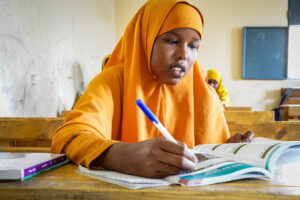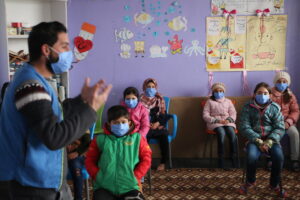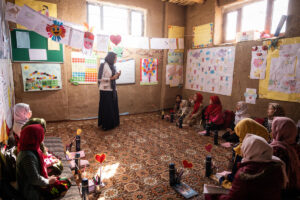Together for Learning Summit: Round up
Currently, we are witnessing how war is devastating the lives of millions of children. For instance, in Ukraine, roughly 2 million children have crossed into neighbouring countries as refugees and since the escalation, over 7.5 million children across Ukraine are in grave danger of physical harm, severe emotional distress, and displacement. At the same time, violence in Cabo Delgado, Mozambique continues to displace thousands of people, with reports of children being abducted by armed groups. These acts of violence put children’s lives at risk and disrupt their ability to learn and dream of hopeful futures.
Canada has a legacy of protecting children everywhere from harm and ensuring their rights to safety. Canada’s Together for Learning Campaign aims to ensure quality education is within the reach of these children and the roughly 26 million forcibly displaced refugees around the world, under the age of 18. To support this campaign, Canada established a Refugee Education Council to help shape the approach to education for displaced children.
On March 30th and 31st, 2022, Canada organized a dialogue between Refugee Education Council members and global leaders at the Together for Learning Summit. The discussion, hosted by Minister Harjit Sajjan, built an agenda for refugee education centred on best practices, lessons learned and challenges. The summit focused on key issues such as inclusive and quality education, gender equality, technology and innovation, mental health and well-being of displaced learners, and accountability of decision-makers.
Refugee youth leaders shared their lived experiences growing up in conflict and presented world leaders with a Youth Manifesto, which contained calls for immediate action to ensure the right to education for all children.
What young leaders had to say:
Istarlin Abdi is a refugee from Somalia who has experienced displacement for more than 20 years. Now, she is an advocate for human rights, a storyteller, a photographer and has also worked to support vulnerable girls. She spoke about how displacement robs children of access to quality, inclusive education and hopeful futures. As a single mother of two girls, she shared her concern for her daughters, caught in the same circumstances of displacement. Istarlin joined the Refugee Education Council to “break the generational curse of displacement by making education a global priority”. For refugee girls, gender-discrimination compounds their experiences of conflict and displacement. Adolescent girls living in conflict-affected countries are 90% more likely not to be in secondary education than elsewhere.

Anojitha Sivaskaran is a youth activist based in Sri Lanka and currently works at the National Peace Council. She described the psychological stress that lasted beyond the war: “Living in a refugee camp under a tarpaulin tied to sticks, toilets were a luxury,” she said. “I tried to find a place to hide when l heard loud sounds, at least two years after the war ended.” She’s calling on world leaders to take immediate action to ensure mental health and well-being is integrated into the curriculum for displaced learners.
Qais Ghasan Abdulrazzaq fled conflict in Syria and nine years later is still living in a refugee camp in Jordan. He works as a robotics trainer teaching other youth in the camp. “While digital learning carries promise for all learners, there are many barriers related to connectivity and access to digital devices for displaced youth”, said Qais. However, he has faith that access to educational technology for displaced learners can be a game-changer. “I sometimes feel I live in two worlds, inside the camp and outside the camp. The digital world is the inter-operational space – it can bridge the gap”. He called on world leaders to address challenges with access to technology for displaced learners, so that they can explore better employment prospects in a digital world.

Laura Barbosa, an educator, community worker and human rights advocate, shared how her education was disrupted by the conflict in Colombia. Sadly, during the violence she lost both her parents. At age 18, she fled to China looking and hoping to build a better future. Now she calls Canada home and works to encourage those who feel hindered by their circumstances to work towards their dreams. She said, “In this phase of my life having built a new life in Canada, I am filled with hope. I hope my daughter will be healthy and happy. I hope she grows up in a world where education is no longer a privilege for some, but a right for all.”
Next Steps
We are inspired by Canada’s commitment to listen to displaced youth and the solutions they offer. Save the Children endorses the commitments in the Together for Learning Summit outcome document with a goal to ensure access to quality education for all displaced children. We call on the Government of Canada to include new investments in education as a key outcome of the Together for Learning Campaign so that all displaced children can similarly access the education they need and deserve.



